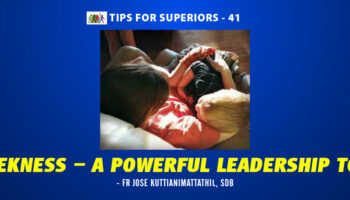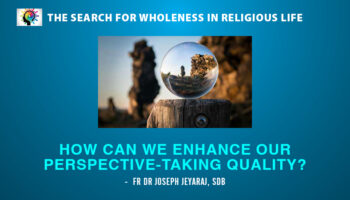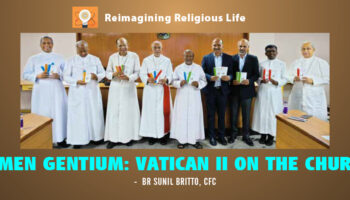Sr Rosalia went home to visit her parents and failed to return after a month, as she was supposed to. On enquiry, it was learnt that she got employed in a college away from her home town and was living in a rented apartment. After several telephone calls and e-mail communications, her major superior visited her personally and coaxed her to return to the institute. Though Sr Rosalia promised to return after the completion of one year, she did not return nor was she willing to be accountable to the superiors.
In this case what are the options open to the superior?
There are two: voluntary and imposed types of exclaustration. What are they?
Voluntary Exclaustration
There are three steps generally followed in this process.
Step 1: A religious writes to the superior general requesting for an indult (a permission or favour in writing granted on request) with the following information: (a) Bio-data, (b) reason or reasons for requesting the indult, (c) efforts undertaken to resolve the difficulties, e.g., spiritual direction, counselling etc., and (d) the duration of the exclaustration (it should not extend beyond three years). While the religious has the right to request for an indult, the superiors are not obliged to grant the request.
Step 2: After receiving the formal request, the superior general convokes the council to seek consent and decide on the matter. They would examine whether there exists a grave cause for the request. If the religious seeking exclaustration seemingly tries to avoid the demands of legitimate authority or the obligations of religious life in community, it will not constitute a grave cause. After a deliberative vote of the council the superior general communicates the decision to the religious in writing. It becomes effective immediately or as specified in the indult.
Step 3: While the superior general hands over the permission, the religious seeking exclaustration signs the document in the presence of two witnesses, indicating that he/she: (a) clearly understands the terms and conditions, (b) lacks active and passive voice, (c) may or may not wear the habit and (d) will notify to the diocesan bishop of the exclaustrated status and the presence in the local church.
If the religious wants to extend the exclaustration after three years, the religious is to state clearly the motivation and the superior and the council have to give their opinion while applying to the Holy See or to the diocesan bishop.
Imposed Exclaustration
The procedure followed here is similar to that of dismissal, though in a less rigorous manner. There are four steps followed generally in this process.
Step 1: The major superior warns the religious about the offence either in writing or orally in the presence of two witnesses. After a minimum gap of fifteen days, the superior gives the second warning, if there is no improvement in the situation. The religious must be given opportunity to defend her case on both the occasions. Even after these warnings, if there is no considerable improvement in the situation, the major superior communicates to the superior general.
Step 2: The superior general convokes the council to seek consent. The superior general and the council examine the case in detail. Then, with the consent of the council, the superior general submits to the Holy See (in a pontifical right institute) or to the diocesan bishop (in a diocesan right institute) the petition requesting exclaustration with the following information: (a) an extract of the council meeting at which consent was given, (b) summary of the efforts made to assist the member over a period of time, (c) the reason or the concrete cause for requesting for the indult, (d) the response of the religious to the warnings issued, (e) bio-data of the member, (f) duration of the exclaustration and (g) the manner in which the institute intends to practice equity and charity.
Step 3: The decision of the Congregation for Institutes of Consecrated Life and Societies of Apostolic Life or the diocesan bishop, as the case may be, is communicated to the religious concerned.
Step 4: is same as mentioned above in step 3 regarding the procedure for voluntary exclaustration.

To subscribe to the magazine Contact Us





